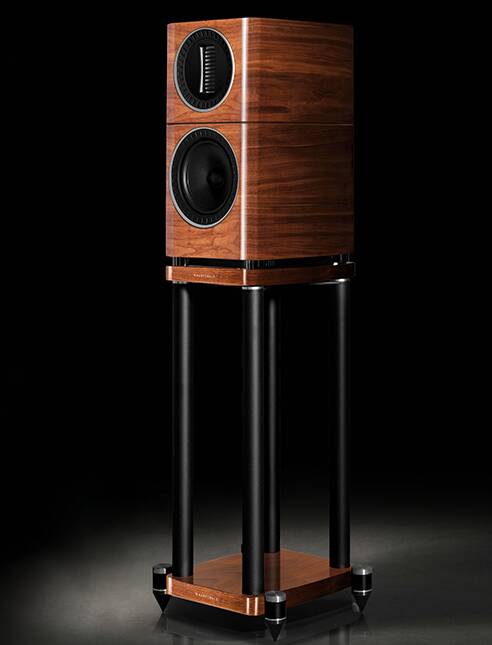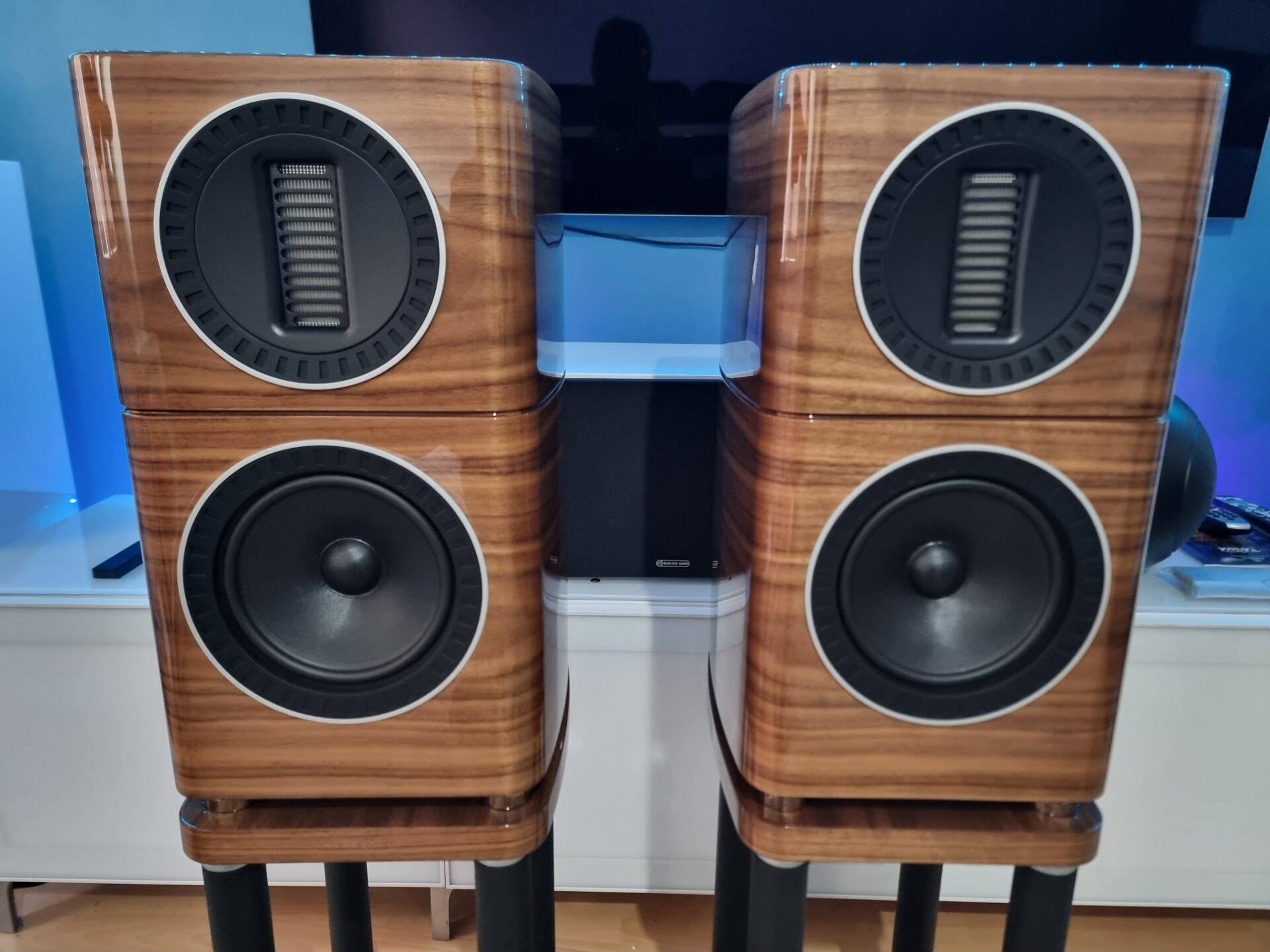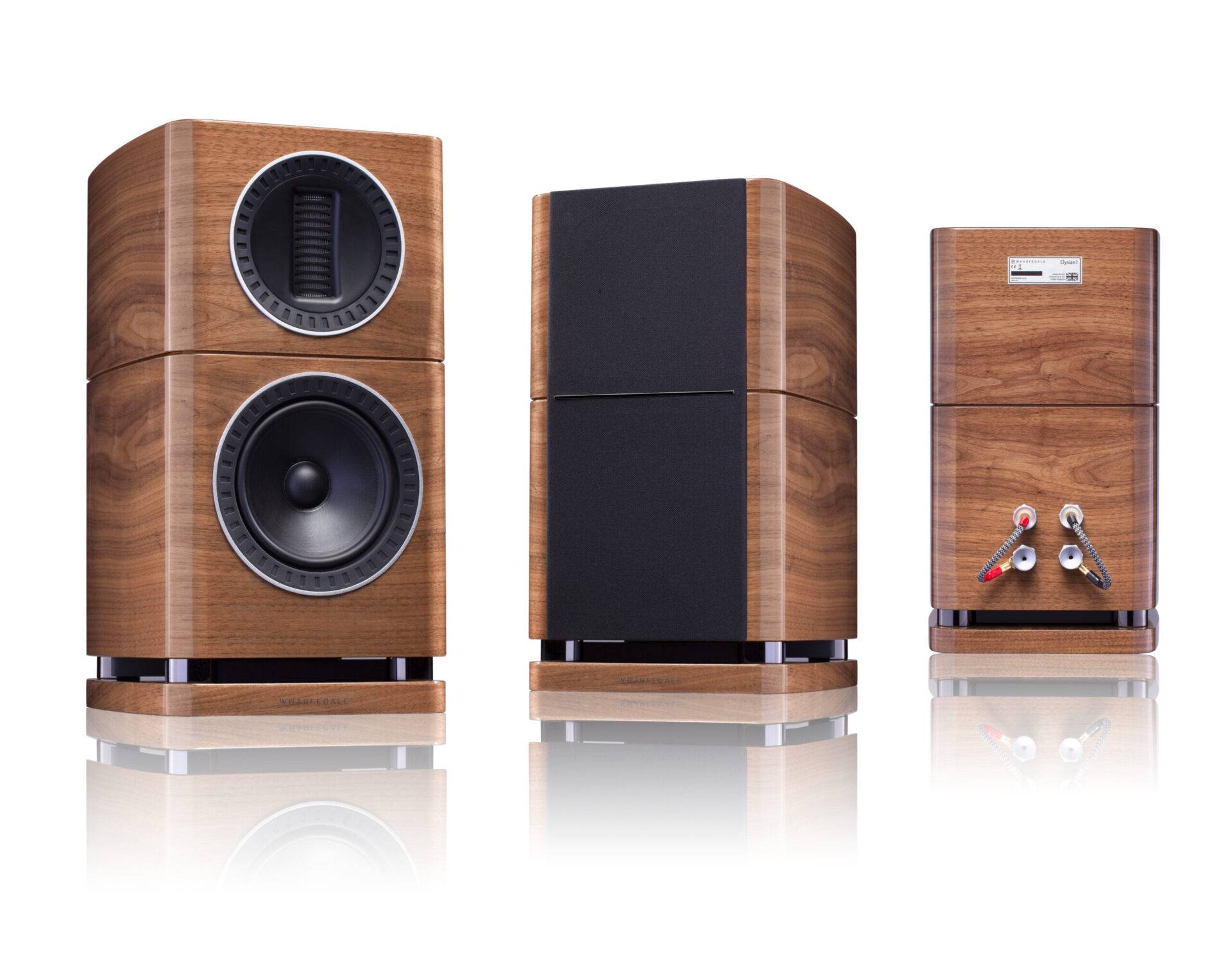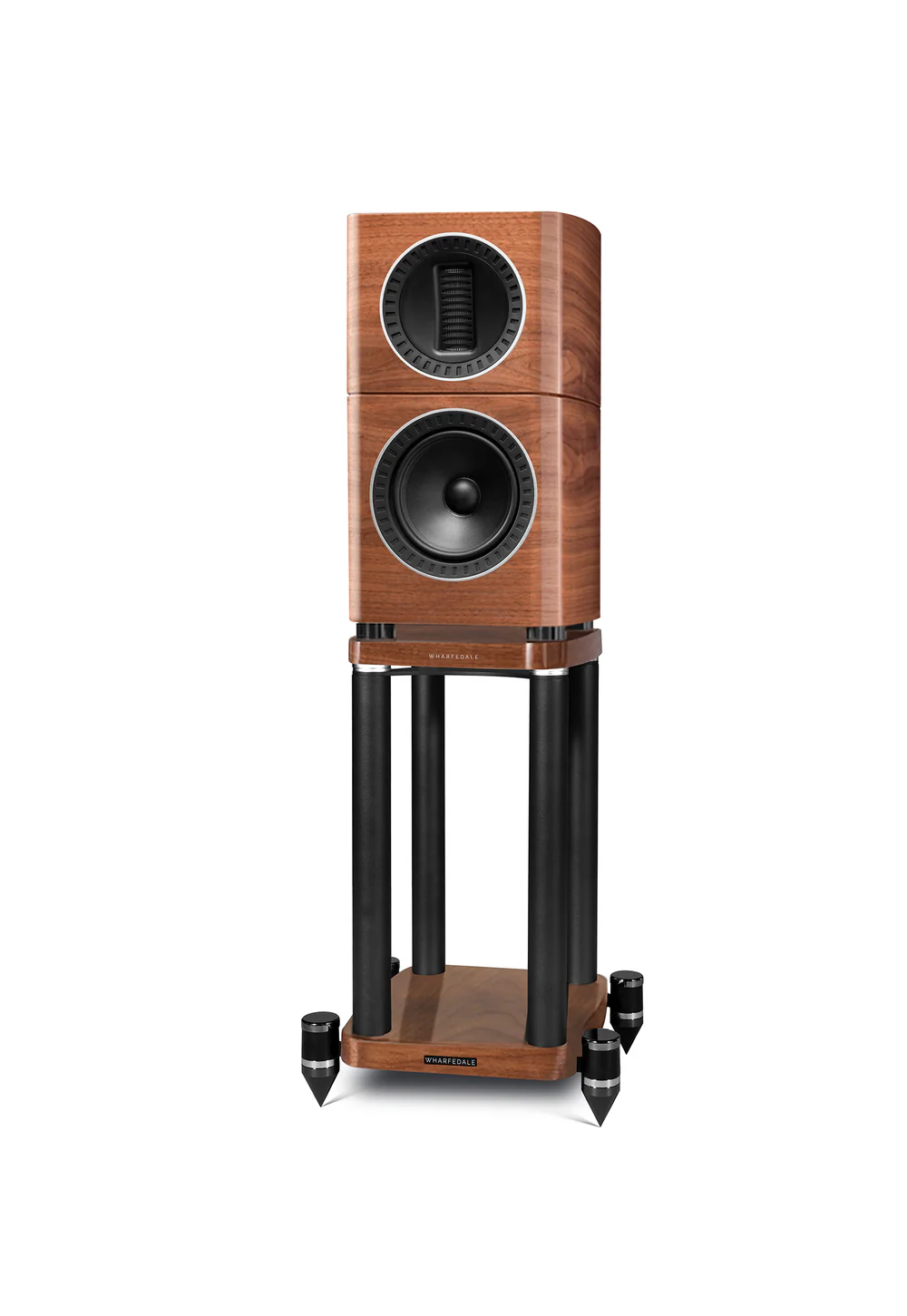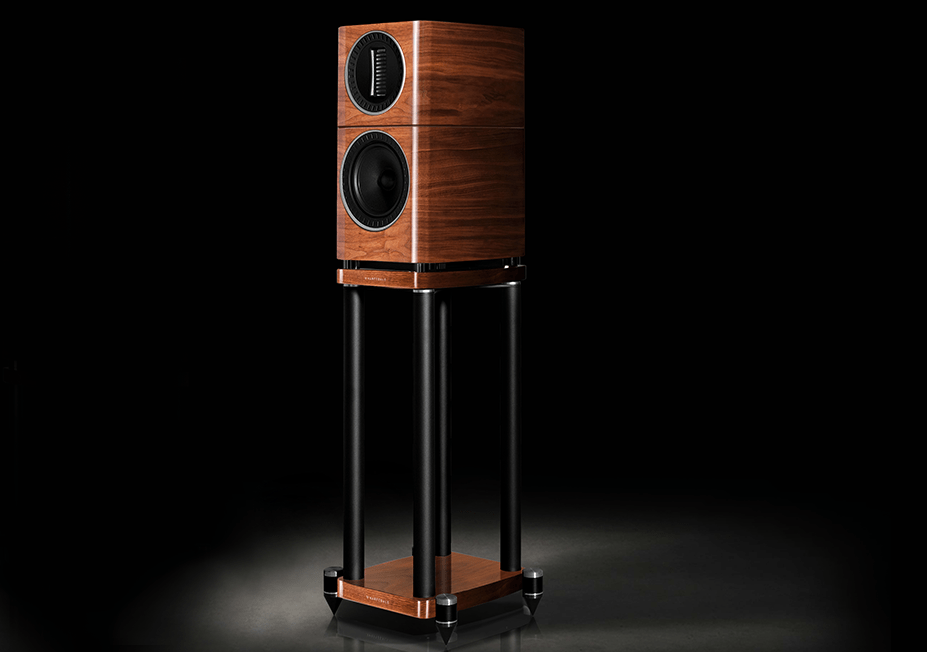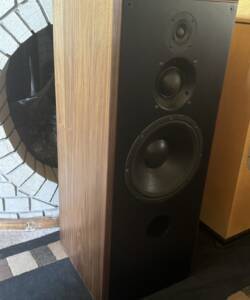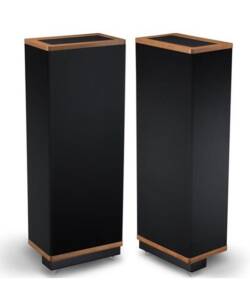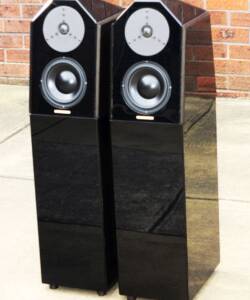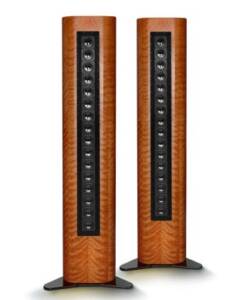Wharfedale Elysian 1 Stand mount speakers (Exquisite !!)
Original price was: R92,000.00.R49,000.00Current price is: R49,000.00.
This is NEW, with stands, crazy special!!!
I cannot find an extensive review, so I include its bigger brother
| Specifications | |
|---|---|
| General Description | 2-way standmount speaker |
| Enclosure Type | Bass Reflex |
| Transducer Complement | 2-way |
| Bass Driver | 7″(180mm) Coated Fibre Glass Matrix Cone |
| Treble Driver | 27*90mm Air Motion Transformer (AMT) |
| Sensitivity (2.83V @ 1m) | 89dB |
| Recommended Amplifier Power | 25-175W |
| Peak Sound Pressure Level (SPL) | 108dB |
| Nominal Impedance | 4Ω (Compatible 8Ω ) |
| Minimum Impedance | 3.8Ω |
| Frequency Response(+/-3dB) | 49Hz ~ 22kHz |
| Bass Extension(-6dB) | 44Hz |
| Crossover Frequency | 2.5kHz |
| Cabinet Volume | 21.6 Litres |
| Dimensions | 490mm (H on plinth) x 263mm (W) x (285+30)mm (D with terminals) |
| Net Weight | 15kg/Each |
| Finish | Available in Black, Walnut, White Piano Finish |
| Standard Accessories | Rubber Feet |
Description
I cannot find an extensive review, so I include its bigger brother’s review.
Only one review with some FR and HD …
Wharfedale Elysian 3 Speakers REVIEW

This is a review written by Terry Ellis October 2023.
For my video review please see my YouTube channel link here
Regulars to this channel will know I am a big fan of speakers designed by Peter Comeau of Wharfedale, Mission, and Quad – so much so I have for reference and comparison testing purposes the Wharfedale Evo 4.2, the Mission 770, I own both of those, and the Mission 700 are still here. Also, I have heard and liked a lot the Wharfedale Lintons and Dovedale. From all that listening experience I have to say that the Wharfedale Elysian 3 are my favourite of the bunch. This is partly because they are not what I was expecting, they are a like a wolf in sheep’s clothing to some degree. I was expecting an easy going and relaxed sounding speaker which would have been fine, but these are not, they are what I am going to call Wharfedale firecrackers because they are lively and dynamic but still very much a Wharfedale.

Does Size Matter
When we think about size, we can often automatically associate bigger with being better, bigger power ratings in amplifiers maybe, bigger bank balances obviously we can all agree on that. However, sometimes smaller can be better, maybe with waistlines yes, tax bills definitely, but what about speakers.
This question becomes pertinent if you are trying to decide between the Wharfedale Elysian 4 or the new smaller Elysian 3. There is not a huge price difference between them, the Elysian 4 cost £6,999 and the Elysian 3 £5,999. £1,000 is still a lot of money but if you are investing in maybe your end game speakers, which these could well be, if bigger is definitely better, then it would be worth saving for a bit longer and buying the Elysian 4. This makes you question why the Elysian 3 exists. Wharfedale told me that they made the Elysian 3 not just to fill a gap in their product line, they made them based on demand. Customers wanted a smaller Elysian floor stander for circumstances where the Elysian 4 is too big for the room and so the Elysian 3, are invariably intended for smaller rooms.

Build Quality and Design
If you are new to the Elysian range these are Wharfedale’s flagship speakers and I think the intent with them is to offer a sound quality that punches well above their price point by comparison to other speakers on the market and do so in a high quality luxury package. I don’t think it matters if speakers costs £5,000, £6,000 or £7,000 pounds it’s a lot of money for speakers so I can’t help but like Wharfedales approach here, trying to offer great value even at a high price, you don’t see this very often in high-end audio.
The Elysian 3 are very compact speakers, not only for their height but also their depth, which will make them easier to accommodate in smaller rooms and, combined with their rather classy styling, it could help them have more of a domestic acceptance factor. The Elysian certainly look unique, with a very chunky out-rigger and spike design, and the fact that they appear to have two bases, or a base and a stand because they are bottom slot ported using SLPP technology. This all looks very different from the norm and very substantial to the eye, but I like it.
I also can’t help but be very impressed with the general build quality. You can see the quality of the veneer that’s used and just how many coats of lacquer have been applied by how deep the finish is. One thing I personally like are the hefty speaker cable terminals. They make screwing up to a spade nice and tight much easier and I think they look cool being a custom design for the speakers.
Clever Technology
The Elysian 3 feature the exact same mid-range driver and AMT or ‘air motion tweeter’ from the larger Elysian 4 and this combination sounds absolutely fantastic. The AMT is likely, by many, to be considered the star of the show and it apparently took five years of R&D to get it to this level. However, I do wonder if it might be the six-inch woven glass fibre mid-range driver that’s the real star here because vocals, especially the upper vocal region, sounds so clear and well resolved and also with some of the real character and tone that I have become accustomed to from other Wharfedale speakers and my own Mission 770. This is really interesting and important to me because it means vocals don’t lose character in favour of being extremely clean sounding. I think the balance of both has been brilliantly struck with the Elysian 3, especially as there is so much clarity, resolution and tight focus to their vocals. The whole package makes it just that bit extra special and impressive.
Next, I must sing the praises of the AMT. It again sounds very clear and precise without being clinical. I like how precisely and easily I was hearing the upper layers in the music. I suppose it is just harmonic information at times, other times it’s real sound, maybe cymbals or synth sounds in electronic music. What you hear is how this extends your appreciation of the music compared to some some soft dome tweeters which don’t seem to give you the high frequency information in quite the same height extended or transparent way. I hate the use of the word “airy” for sound description, so instead I am going to use complete or atmospheric. The full picture of sound definitely feels more complete.

Further Listening
I will admit that, at first, I was finding the Elysian to be just a touch, just a smidgen too forward perhaps because of their energetic delivery in the upper regions, but they seemed to smooth out with more playback and as I found better placement for them in my room for the best bass. The better bass created a much better-balanced sounding overall speaker, still with lots of energy but now with more refinement. One thing I am particularly impressed with is the sibilance region which might be just the AMT or maybe it is a combination of the mid-range driver and AMT together, in which case it’s the crossover too. The ‘sss’ sound is there when it’s supposed to be, and not when it’s not supposed to be, but when it is there, it is so well managed. You don’t feel like the sound is smoothed over in any way, yet it’s not accentuated at all, which is remarkable given the energetic and lively sonic delivery.
The way the music gets out of the speakers or, more accurately, the way the speakers get out of the way to create a very wide open clear window is very notable, especially with the space between the speakers, which can become congested and mushy if the speakers are ‘blooming’ the sound. There is none of that here at all which must be related to the cabinet design.
For me the very obvious rectangle shape of the Elysian speakers, with very rounded edges, is quite unusual for a high end speaker, where we often see curved cabinets but, given the Elysian 3’s ability to not only create sound stages with impressive depth, sound that very clearly goes beyond the speakers, they also go wide and will deliver the soundstage right out into the room too which is extremely striking, all about as good as it gets in a small room. This tells me that the cabinet must not be adding too much to the sound, otherwise the clarity of this imaging would be more obviously muddied or blurred, which it is not. Everything is very clear, and I appreciated this immensely. The cabinet is a multi-layer sandwich of differing woods and densities called PROS – ‘panel resonance optimisation system’. A fancy name, but it seems to work very well and maybe this is an area where a smaller speaker has an advantage over a larger one with each panel being smaller and therefore having less natural resonances.
When you have a speaker that wants to give you the kind of clarity, energy, and liveliness as the Elysian 3 it is very important to have the right amount of bass to balance the sound. Of course, Peter Comeau knows how to balance the sound of a speaker, but I think it’s important to note that we have the same mid-range driver and AMT as is used in the larger Elysian 4, but with smaller dual 7-inch coated glass fibre bass drivers in a smaller cabinet which of course effects the bass output.
In my initial testing of the Elysian 3 I found their bass to be exceptionally tightly controlled, and articulate, which is important because the bass needs to keep up with the very fast and energetic mids and highs. It very obviosuly does, so that is no concern here but what about bass output?
The Elysian 3 bass output and extension can be very impressive for the speaker’s size, especially considering how tight the bass is, as a tighter bass will always psychoacoustically seem like there is less bass compared to a more bloomed, or fatter bass delivery. Where you place the Elysian 3 in the room and how big the room is will determine how much room gain there is, or how much the room will boost the speakers bass output (this is normal and happens to all speakers in all rooms . Listening to music with big bass instruments like Lady Black Bird – Black Acid Soul, the Elysian 3 had no problem delivering the big double bass, in that album, with scale, impact, and detail. Their bass extension at times was very impressive. However, for more big bass demanding music, like some drum ‘n bass or heavier electronic, I still think I would want to use subwoofers for more fullness and room filling / hitting impact. That’s a personal preference of course and definitely not an essential for everyone, but also using some very good and fast subwoofers are a good recommendation here for me to make
I mentioned this might depend on where you are positioning the Elysian 3 as I was told they have been tuned with some expectation of the owner needing to place them closer to the front wall or a room corner, and that will add more room gain and so in the circumstances of placement very close walls and corners you might want to use a subwoofer. It will depend on a lot of factors, I was happy without but would have been happier with, for sure.

Partnering Equipment
I think we should talk about amplifiers because the Elysian 3 seem relatively easy to drive being a 4-ohm load with an 89db sensitivity and up to 200-watt power rating. However, they do have some impedance dips, so you will want to use a good amplifier with them. I started listening with the Audiolab 9000a and was getting good results. However, pretty soon I was missing the big McIntosh MA352 I had at home recently for review. I think that would be an awesome amp for these speakers as likely would a Luxman 509X or maybe the new 509Z I have my eye on (hint, hint, Luxman). I still have the Galion TS120 SE tube amplifier and this was a really good amplifier to use with the Elysian 3 as, using my preferred Shuguang Z tubes, it has some power and balls for a tube amp. I really enjoyed its bold sound and it added some tube colour and character to the vocals, which I really enjoyed. I ended up settling for the biggest guns system I had available, a £30k digital stack from Ideon Audio, the Bespoke Audio Passive preamplifier, which is £18k, and the NAD M23 power amplifier. This setup gave me the best overall sound in terms of sound stage, dynamics and so I think the moral of this story is you don’t need to spend a huge amount of money in order to get a good sound from the Elysian 3 but, if you do, or have already spent the money, they will thank you for it and deliver the results accordingly.

Comparisons
The last thing to talk about is a comparison, which can be useful. At the moment I have for review the CSS Typhon speakers, which are a similar size and price to the Elysian. What is interesting here is that the CSS look like the more modern speaker of the two and yet, surprisingly, it’s the Elysian that has the more modern sound.
I need to be careful here about getting into this comparison in too much detail. The Typhon need more run-in time and I need more time with them testing different amplifiers and things, but after four or so days of playing with the exact same system they sound very big, very warm, very inviting with a very pleasing tonality. They deliver a lot of bass, which I like, but they are not opening up the window onto the music with anything like the same clarity as the Elysian. The overall soundstage is all there, but it’s not nearly as clear in any area. For me the Typhon are giving me a musical cuddle, which is enjoyable. Their presentation is noticeably much darker and more bloomed from top to bottom, and they sound softer in the vocals. That said, the vocals are very inviting and pull you to them, but they don’t have the same clarity, definition, and impact as the Elysians do.
However, the Typhon give you a lot more subwoofer like bass compared to the Elysian, which helps pressurise the room and warm the whole sound, but their bass is also just a little bloomed or heavy handed at times. I don’t mind some bass bloom, its great with some music such as heavier electronic or drum ‘n bass or similar. The Typhons bass is more pleasing here but with other music the tighter Elysian bass is better.
Despite not being a perfect setup comparison, I still think this is useful as it shows just how good the Elysian top section is, the mid range driver and AMT are exceptional but, in my room a bit more bass from the bottom section wouldn’t be the end of the world.

Any Downside?
Just before I finish off this review, are there any negatives with the Elysian 3 outside of sonic preference? By that I mean you might want a big warm sound, in which case the Typhon could have more appeal, and therein lies the main potential negative which might be in the speakers general character. I think their lively sound does come with a little edge to it. This is managed really well, but there is a little edge which some are going to really love and others might find its just not relaxing enough for them. This what the Wharfedale Dovedale speakers offer, a lot of energy and dynamics with a more forgiving easy going agenda. It would be interesting to know if the larger Elysian 4 are the same or do they sound a little more easy going like how I was expecting, but if they did would I miss the clarity edge of the 3, I think I probably would – confusing at times this high-end audio lark, its a funny hobby like that.
Conclusion
This a pretty easy conclusion for me. If you own Wharfedale speakers, maybe from the Evo, Linton or Denton ranges, then so long as your room is not too large you are not going to be disappointed in the build or sound of the Elysian 3. I think they will be everything you hoped they would be and more, and so it’s a very safe upgrade path for you. But £6,000 is a lot of money, which of course could buy you any number of other speakers, and when I look at what you can buy from Bowers, KEF or Monitor Audio, their best ranges £6000 would only get a book-shelf speaker, perhaps including a stand, often not. This could be the big deal here for you, this level of speaker and sound quality for the price, the Elysian 3 really makes a strong case but of, course, I want to hear the Elysian 4 now…

An Essential Audition Award is granted in recognition of a products high performance but with a certain uniqueness that makes auditioning even more essential.
